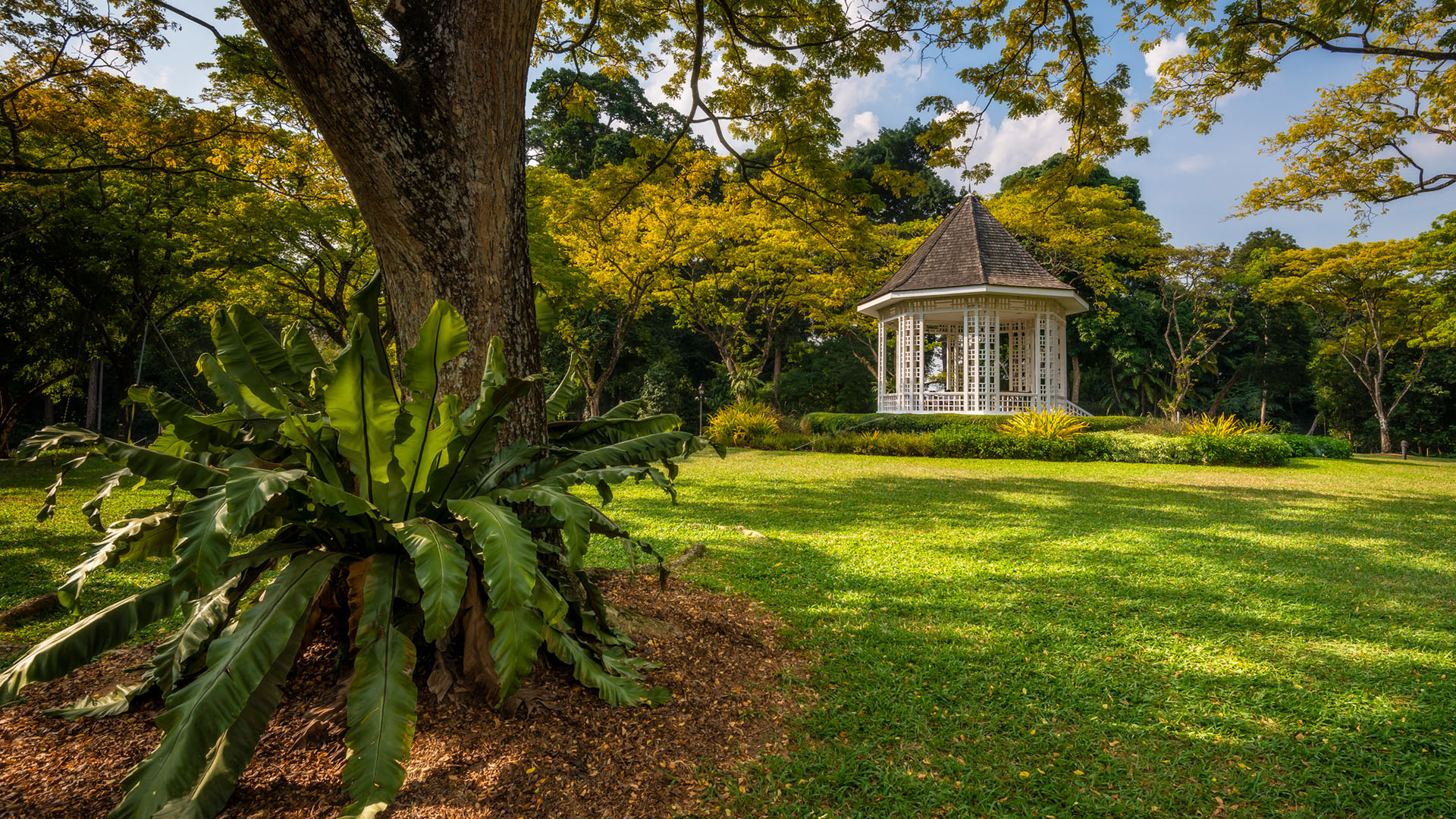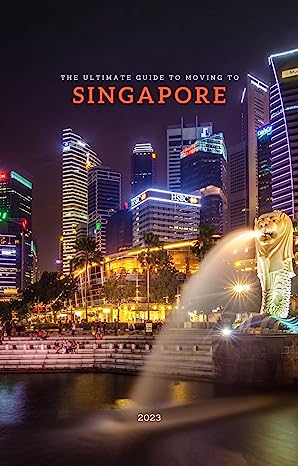Singapore Botanic Gardens: A Detailed Guide to the City’s Green Oasis
Singapore Botanic Gardens serves as a lush oasis in the bustling city of Singapore, offering a serene retreat amidst the urban landscape. As the nation’s first UNESCO World Heritage Site, the gardens showcase a remarkable collection of plant species that help give Singapore the nickname of ‘Garden City’. The gardens span 74 hectares, featuring a diverse array of flora including a vast assortment of orchids, gingers, palms, and cycads.
Established in the mid-19th century, this tropical garden has grown to become an integral part of Singapore’s identity as a ‘City in a Garden’, reflecting the city-state’s commitment to preserving nature within its urban environment. The botanic gardens not only provide a space for recreation and education for locals and tourists alike but also play a crucial role in scientific research and conservation efforts, housing a living collection that continues to grow in global significance.
Visitors can explore various attractions within the gardens such as the National Orchid Garden, which boasts the largest display of orchids on Earth, and the heritage museum, which offers insights into the rich history of the gardens. Interactive experiences for children can be found at the Jacob Ballas Children’s Garden, and the CDL Green Gallery promotes environmental sustainability through its exhibitions. Open daily from the early hours of the morning to midnight, and with free admission to its outdoor spaces, the Singapore Botanic Gardens provides an accessible and educational natural haven in the urban setting.
History and Heritage
The Singapore Botanic Gardens embodies a rich tapestry of history and is a significant cultural symbol of Singapore’s heritage. It has received international recognition for its historical importance and contributions to botanical science.
UNESCO Heritage
The Singapore Botanic Gardens proudly bear the title of a UNESCO World Heritage Site. This distinction, bestowed upon it in 2015, recognises its role as a leading tropical botanical institution and its well-preserved cultural landscape that has been influential since 1859. The site demonstrates the Gardens’ impact on tropical botany and its historical continuity.
Agri-Horticultural Society
The creation of Singapore Botanic Gardens was spearheaded in 1859 by the Agri-Horticultural Society. This society played a pivotal role in establishing the gardens, focusing on the study and promotion of the region’s agricultural potential. They laid the foundations for the Gardens to become a centre of botanical and horticultural activity, contributing significantly to the cultivation of crops that would thrive in the climate.
Colonial Building
Within the lush greenery of the Singapore Botanic Gardens stand significant colonial-era buildings. Holttum Hall, named after the former director of the Gardens Eric Holttum, is one such edifice that mirrors the colonial architectural influence. It houses the Botanical Research Centre and exemplifies the blend of historical structures with modern-day scientific pursuit in the Gardens.
Gardens and Lakes
The Singapore Botanic Gardens showcases an impressive array of floral splendour, featuring significant bodies of water that are a sanctuary for aquatic life and add to the serene landscape.
National Orchid Garden
The National Orchid Garden is the pinnacle of the Gardens’ horticultural achievements, playing host to a comprehensive collection of orchids. These flowers, renowned for their vibrant colours and exotic shapes, contribute to the biodiversity and appeal of the Gardens. The Garden emphasises the beauty of these plants and their role in ecological preservation and research.
Swan Lake
Swan Lake, established in 1866, serves as one of the oldest ornamental water-features in Singapore. The lake is home to a pair of graceful swans, and its clear waters reflect the surrounding lush greenery. It’s a prime location for visitors to experience tranquillity and observe a selection of aquatic plants and animals.
Eco-Lake
Adjacent to the Eco-Garden, the Eco-Lake provides an environment where plants of economical and ecological significance grow. Serving as a natural habitat for a variety of bird species, the lake supports a natural ecosystem within the urban setting of the Gardens. It’s a space where conservation efforts flourish and educational opportunities abound.
Flora and Fauna
The Singapore Botanic Gardens is a treasure trove of tropical plants and wildlife, including a comprehensive collection of orchids. Its rich biodiversity and significant contributions to botany, most notably orchid hybridisation, make it an important site for both conservation and education.
Tropical Plants
The Gardens support an impressive array of tropical flora, with a living collection encompassing over 10,000 plant species. Highlights include the extensive assemblages of gingers, palms, and cycads. Botanical research thrives here, blending traditional cultivation with scientific study to foster a deeper understanding of tropical botany.
Wildlife
Amidst the greenery, the Gardens are alive with a variety of animal species that inhabit this urban oasis. Birds, insects, and small mammals coexist within the carefully cultivated landscapes. The presence of these creatures contributes to the delicate ecological balance and enhances the experience for visitors who observe them in their natural habitat.
National Flower
At the heart of the Gardens’ botanic pursuits is the Vanda Miss Joaquim orchid, Singapore’s national flower. This orchid is a vibrant symbol of the country’s commitment to preserving its natural heritage. Orchid hybridisation, a practice with deep roots in the Gardens’ history, continues to flourish, consistently producing new and enchanting orchid hybrids for admiration and study.
Education and Research
The Singapore Botanic Gardens plays a central role in both educating the public and conducting specialised research in plant science and conservation efforts.
Science
Internationally recognised for its scientific work, the Singapore Botanic Gardens houses facilities such as the Herbarium and laboratories. These are dedicated spaces where research on the plant diversity of Southeast Asia takes place. One prominent figure in the Gardens’ history was Professor Eric Holttum, who led pioneering research into orchid breeding techniques during his tenure.
Conservation
At the forefront of conservation, the Singapore Botanic Gardens Seed Bank performs a critical function in preserving the seeds and germplasm of plant species from Southeast Asia. Established to safeguard plant biodiversity, the facility utilises latest methods in seed preservation and supports ongoing research efforts. This approach is pivotal for the protection of plant species in the face of environmental challenges.
Visitor Information
The Singapore Botanic Gardens offer free admission to guests and are open from early morning until midnight, with multiple entrances providing easy access.
Admission
Admission: Free
Opening Hours
Operating Hours: Daily from 5 am to 12 midnight
Tanglin Gate
Tanglin Gate: This main entrance is accessible and centrally located for visitor convenience.
Bukit Timah Entrance
Bukit Timah Entrance: Another primary entry point to the Gardens, ensuring accessibility for those closer to this area.
Attractions and Exhibits
Singapore Botanic Gardens showcases a rich variety of floral beauty and educational exhibits. In this section, we’re exploring two notable areas, the Ginger Garden and the Rainforest.
Ginger Garden
The Ginger Garden presents an impressive collection of species within the Zingiberaceae family. Visitors can meander through pathways surrounded by lush greenery and vibrantly coloured ginger flowers. This garden is a habitat for various wildlife, adding to its dynamic atmosphere. Structured as an immersive experience, the garden enables visitors to witness the diversity of gingers and their related species up close.
Rainforest
Preserved within the city’s limits, this slice of primary rainforest is denser and more compact than the surrounding cultivated gardens. It provides an authentic experience of a tropical rainforest’s ecosystem. The trail through this area is accessible and offers insight into the ecological significance of rainforests. It’s a vital educational resource that details the rainforest’s complexity and the urgent need for its conservation.
Recreation and Leisure
At the Singapore Botanic Gardens, visitors can indulge in an array of leisure activities set against a verdant backdrop. Whether you’re enjoying a concert at Symphony Lake or dining at the various restaurants, the Gardens offer a tranquil escape from the hustle and bustle of the city.
Symphony Lake
The Symphony Lake is a favoured spot for music enthusiasts and nature lovers alike. It serves as a natural auditorium for regular performances, including those by the Singapore Symphony Orchestra. Visitors can relax by the water’s edge, as birds flutter around, creating a serene atmosphere.
Restaurants
The Halia is a prominent restaurant within the Gardens, providing patrons with a dining experience surrounded by greenery. A selection of eateries also offers various cuisines:
- Where to Eat: Options range from casual cafes to upscale restaurants.
- Restaurants: The array of dining establishments cater to different preferences and occasions.
The Gardens ensures a satisfying visit for those looking to unwind amidst nature’s beauty, with dining and leisure in ample supply.
Cultural Features
The Singapore Botanic Gardens showcases significant cultural elements, encapsulating a blend of horticulture and artistry within its grounds.
Heritage Museum
The SBG Heritage Museum is situated in Holttum Hall, a building with historical significance as it was named after the Gardens’ former director, Eric Holttum. Visitors to the museum can observe displays that chronicle the Garden’s establishment in 1859 and explain its growth through the years to become a beloved symbol within Singapore’s urban panorama. The museum’s exhibits are comprehensive, offering insights into the Gardens’ contributions to science and conservation.
Botanical Art Gallery
Adjacent to the Heritage Museum lies the Botanical Art Gallery, situated within the CDL Green Gallery. This gallery presents a collection of botanical illustrations, showcasing a tradition that marries scientific precision with artistic expression. Illustrated works highlight the extensive variety of flora within the Gardens, emphasising the intricate beauty and diversity of plant life. Through these exhibits, the gallery offers a closer look at the intricate details of plant species represented in the Gardens.
Architecture and Layout
Singapore Botanic Gardens showcases a blend of colonial architecture and carefully planned landscapes. The Gardens present a tangible record of Singapore’s British colonial history and their adaptation of the English Landscape Style to suit local conditions.
Colonial Buildings
Burkill Hall and Ridley Hall are significant colonial structures within the Gardens. The former serves as a venue for various events and was previously the Director’s residence. Ridley Hall, named after the Gardens’ director Henry Nicholas Ridley, also holds historical significance and reflects the colonial era’s architectural style.
Layout
The layout of the Singapore Botanic Gardens reflects a coherent design strategy combining both aesthetic and scientific purposes. The Gardens feature several distinct areas, each with a specific form and function, such as:
- Ethnobotany Garden: Showcases the relationship between plants and people.
- Evolution Garden: Illustrates plant evolution.
- Gallop Extension: Offers a natural space for visitors to explore.
- Jacob Ballas Children’s Garden: Tailored for educational and recreational activities for younger visitors.
- Learning Forest: Highlights a range of habitats.
- Rain Forest Trail: Provides an immersive experience into tropical rainforest flora.
Events and Activities
The Singapore Botanic Gardens hosts a variety of events and activities throughout the year, catering to different interests and age groups. These include performances, workshops, and themed exhibitions.
The Garage
The Garage is a well-known venue within the Singapore Botanic Gardens, providing an exceptional dining experience amidst the lush greenery. It is not only a place to dine but also hosts events that enliven the atmosphere.
- Activities: Workshops and family-friendly events.
- Location: Conveniently situated near the Botanic Gardens’ main entrance.
Shaw Foundation Symphony Stage
The Shaw Foundation Symphony Stage is a famous spot in the Gardens, regularly featuring concerts and live performances. The stage is set against the backdrop of Swan Lake, creating a picturesque setting for events.
- Concerts: Regularly scheduled performances by both local and international artists.
- Family Outings: An ideal location for picnics while enjoying live music.
Amenities and Services
The Singapore Botanic Gardens offer a host of amenities to enhance visitors’ experiences, featuring places for refreshment and retail therapy amidst the greenery.
Cafes
The Gardens house several cafes where visitors can enjoy a variety of snacks and meals. These establishments provide a tranquil setting for a quick bite or a leisurely meal.
- Food For Thought: Offers a range of snacks, Western brunch dishes, and local fare.
- The Halia: Serves contemporary European cuisine with Asian influences.
Shopping District
Adjacent to the Singapore Botanic Gardens, Orchard Road is the well-known shopping boulevard. Within walking distance, visitors can access a wealth of retail options.
- Tanglin Gate: Leads to Tanglin Mall, where shoppers find specialty stores and eateries.
- Botany Centre: Features a selection of gift shops that carry botanically themed products.




